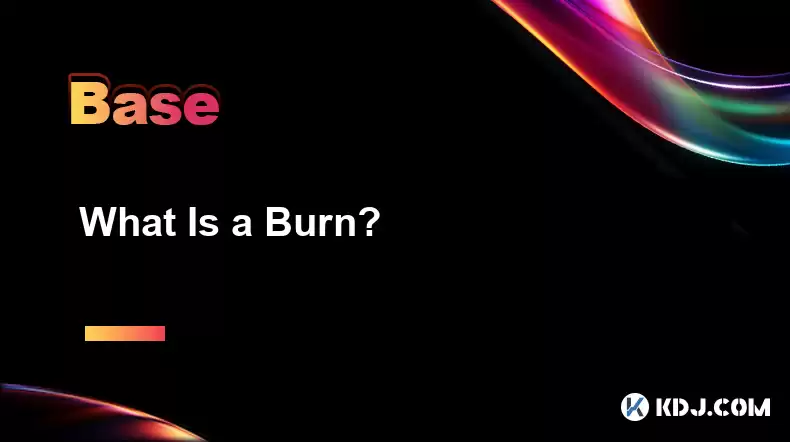-
 Bitcoin
Bitcoin $115000
0.12% -
 Ethereum
Ethereum $3701
4.50% -
 XRP
XRP $3.081
2.99% -
 Tether USDt
Tether USDt $0.0000
-0.01% -
 BNB
BNB $767.9
1.45% -
 Solana
Solana $169.5
3.13% -
 USDC
USDC $0.9999
0.01% -
 Dogecoin
Dogecoin $0.2106
4.30% -
 TRON
TRON $0.3334
1.62% -
 Cardano
Cardano $0.7564
2.54% -
 Stellar
Stellar $0.4165
0.76% -
 Hyperliquid
Hyperliquid $38.75
0.25% -
 Sui
Sui $3.593
3.00% -
 Chainlink
Chainlink $17.08
3.59% -
 Bitcoin Cash
Bitcoin Cash $573.6
4.35% -
 Hedera
Hedera $0.2508
-0.84% -
 Avalanche
Avalanche $23.07
6.46% -
 Ethena USDe
Ethena USDe $1.001
-0.02% -
 Litecoin
Litecoin $120.8
8.17% -
 UNUS SED LEO
UNUS SED LEO $8.943
-0.32% -
 Toncoin
Toncoin $3.400
-5.60% -
 Shiba Inu
Shiba Inu $0.00001255
1.54% -
 Uniswap
Uniswap $9.908
6.32% -
 Polkadot
Polkadot $3.718
2.10% -
 Monero
Monero $303.0
-0.74% -
 Dai
Dai $0.9999
-0.02% -
 Bitget Token
Bitget Token $4.392
0.91% -
 Cronos
Cronos $0.1403
6.31% -
 Pepe
Pepe $0.00001076
1.13% -
 Aave
Aave $267.2
1.80%
What Is a Burn?
Burning cryptocurrency intentionally removes a set number of coins or tokens from circulation, reducing the supply and influencing the asset's market dynamics.
Dec 18, 2024 at 06:42 am

Key Points:
- Understanding the Concept of Burning Cryptocurrency
- Different Mechanisms of Burning Cryptocurrency
- Benefits and Advantages of Cryptocurrency Burning
- Potential Concerns and Risks Associated with Burning Cryptocurrency
- Evolution of Cryptocurrency Burning Practices
- Notable Examples of Cryptocurrency Burns
- FAQs on Cryptocurrency Burning
Understanding the Concept of Burning Cryptocurrency
In the cryptocurrency sphere, burning refers to the intentional destruction or removal of a specific amount of a cryptocurrency from the circulating supply. This process aims to reduce the total number of coins or tokens available, thereby influencing their supply and demand dynamics. The act of burning cryptocurrency is often executed by sending the designated coins or tokens to a "burn address" or "dead wallet," which is a cryptographically inaccessible address. Once sent, the burned cryptocurrency becomes irretrievable and can no longer participate in any transactions or market activities.
Different Mechanisms of Burning Cryptocurrency
Various mechanisms exist to facilitate cryptocurrency burning:
- Manual Burning: Developers or community members can manually send cryptocurrency to a burn address through a transaction on the blockchain network.
- Protocol-Defined Burning: Some cryptocurrencies incorporate a built-in mechanism that automatically burns a certain percentage of each block reward or transaction fee.
- Community-Driven Burning: Communities can organize and participate in token burns to reduce the circulating supply and increase the value of the remaining tokens.
Benefits and Advantages of Cryptocurrency Burning
The practice of cryptocurrency burning offers several potential benefits:
- Supply Reduction: By decreasing the number of tokens in circulation, burning reduces the overall supply, which can lead to increased scarcity and potentially higher demand for the remaining tokens.
- Increased Token Value: As supply decreases, the demand for the remaining tokens is expected to increase, resulting in a rise in token value or price.
- Transaction Fee Optimization: Burning cryptocurrency can help optimize transaction fees by reducing the number of tokens used for each transaction, thereby lowering the costs associated with blockchain transactions.
Potential Concerns and Risks Associated with Burning Cryptocurrency
While burning cryptocurrency offers potential benefits, it also raises some concerns:
- Irreversible Action: The burned tokens cannot be recovered once sent to a burn address, making it an irreversible process that requires careful consideration.
- Centralization: Manual burning or community-driven burns can potentially lead to centralized control over the token supply, as the burning decisions may be influenced by a small group of individuals or entities.
- Insufficient Demand: Burning tokens does not guarantee an increase in token value if demand remains low or decreases in the future.
Evolution of Cryptocurrency Burning Practices
The practice of cryptocurrency burning has evolved over time, with new strategies and reasons emerging:
- Early Token Distributions: Initial coin offerings (ICOs) often included a portion of tokens designated to be burned after a certain period to reduce the circulating supply.
- Protocol Upgrades: Developers have introduced burn mechanisms as part of protocol upgrades to control supply and improve network performance.
- Reward Allocation: Some cryptocurrencies allocate a portion of rewards to burning, allowing miners or stakers to earn tokens while reducing the overall supply.
Notable Examples of Cryptocurrency Burns
Significant cryptocurrency burns have occurred:
- Binance: The Binance coin (BNB) has a dynamic burning mechanism that automates the burning of a portion of the BNB supply based on trading volume.
- Cardano: The Cardano protocol incorporates a treasury system that allows for the burning of ADA tokens to fund future development initiatives.
- Ethereum: The highly anticipated Ethereum merge will implement a "burn" mechanism that is expected to reduce the circulating supply of Ether (ETH).
FAQs on Cryptocurrency Burning
- Why do cryptocurrencies burn tokens?
To reduce the circulating supply, potentially increasing the value of the remaining tokens. - Who can burn cryptocurrency?
Developers, communities, or individuals with access to the cryptocurrency's private keys. - Is cryptocurrency burning a scam?
Not inherently, but burning can be used for manipulative purposes if not executed transparently. - Can burned cryptocurrency be recovered?
No, once sent to a burn address, cryptocurrency is permanently lost. - What is the largest cryptocurrency burn ever?
In 2021, Binance burned 1,099,888 BNB, valued at approximately $600 million at the time. - Is burning cryptocurrency legal?
Generally yes, but certain jurisdictions may have specific regulations or considerations related to token burning. - How often should cryptocurrencies burn tokens?
The optimal frequency varies depending on the cryptocurrency and its underlying goals. - Does cryptocurrency burning reduce transaction fees?
Yes, by decreasing the number of tokens in circulation, the transaction fees can be optimized. - Can cryptocurrency burning impact network security?
Potentially, if a significant portion of the circulating supply is burned, it could weaken the network's decentralization and security.
Disclaimer:info@kdj.com
The information provided is not trading advice. kdj.com does not assume any responsibility for any investments made based on the information provided in this article. Cryptocurrencies are highly volatile and it is highly recommended that you invest with caution after thorough research!
If you believe that the content used on this website infringes your copyright, please contact us immediately (info@kdj.com) and we will delete it promptly.
- Crypto Airdrops: Your August 2025 Guide to Free Tokens & Opportunities
- 2025-08-05 13:45:13
- Luxury Dining Reimagined: St. Regis Singapore & Marriott's Culinary Celebration
- 2025-08-05 13:45:13
- Fancy Farm Picnic: A Sneak Peek at the 2026 US House Race
- 2025-08-05 13:50:12
- Cardano Price, ADA Forecast & Ethereum Price: What's the Buzz?
- 2025-08-05 13:50:12
- Velo Universe, DEX, and DeFi Security: Navigating the Future of Decentralized Trading
- 2025-08-05 09:25:13
- Bitget Wallet Revolutionizes Solana with Gas-Free Transactions: A New Era for DeFi
- 2025-08-05 09:25:13
Related knowledge

What is the difference between CeFi and DeFi?
Jul 22,2025 at 12:28am
Understanding CeFi and DeFiIn the world of cryptocurrency, CeFi (Centralized Finance) and DeFi (Decentralized Finance) represent two distinct financia...

How to qualify for potential crypto airdrops?
Jul 23,2025 at 06:49am
Understanding What Crypto Airdrops AreCrypto airdrops refer to the distribution of free tokens or coins to a large number of wallet addresses, often u...

What is a crypto "airdrop farmer"?
Jul 24,2025 at 10:22pm
Understanding the Role of a Crypto 'Airdrop Farmer'A crypto 'airdrop farmer' refers to an individual who actively participates in cryptocurrency airdr...

What is the difference between a sidechain and a Layer 2?
Jul 20,2025 at 11:35pm
Understanding the Concept of SidechainsA sidechain is a separate blockchain that runs parallel to the main blockchain, typically the mainnet of a cryp...

What is the Inter-Blockchain Communication Protocol (IBC)?
Jul 19,2025 at 10:43am
Understanding the Inter-Blockchain Communication Protocol (IBC)The Inter-Blockchain Communication Protocol (IBC) is a cross-chain communication protoc...

How does sharding improve scalability?
Jul 20,2025 at 01:21am
Understanding Sharding in BlockchainSharding is a database partitioning technique that is increasingly being adopted in blockchain technology to enhan...

What is the difference between CeFi and DeFi?
Jul 22,2025 at 12:28am
Understanding CeFi and DeFiIn the world of cryptocurrency, CeFi (Centralized Finance) and DeFi (Decentralized Finance) represent two distinct financia...

How to qualify for potential crypto airdrops?
Jul 23,2025 at 06:49am
Understanding What Crypto Airdrops AreCrypto airdrops refer to the distribution of free tokens or coins to a large number of wallet addresses, often u...

What is a crypto "airdrop farmer"?
Jul 24,2025 at 10:22pm
Understanding the Role of a Crypto 'Airdrop Farmer'A crypto 'airdrop farmer' refers to an individual who actively participates in cryptocurrency airdr...

What is the difference between a sidechain and a Layer 2?
Jul 20,2025 at 11:35pm
Understanding the Concept of SidechainsA sidechain is a separate blockchain that runs parallel to the main blockchain, typically the mainnet of a cryp...

What is the Inter-Blockchain Communication Protocol (IBC)?
Jul 19,2025 at 10:43am
Understanding the Inter-Blockchain Communication Protocol (IBC)The Inter-Blockchain Communication Protocol (IBC) is a cross-chain communication protoc...

How does sharding improve scalability?
Jul 20,2025 at 01:21am
Understanding Sharding in BlockchainSharding is a database partitioning technique that is increasingly being adopted in blockchain technology to enhan...
See all articles

























































































